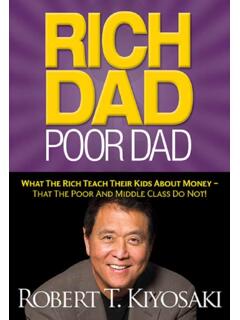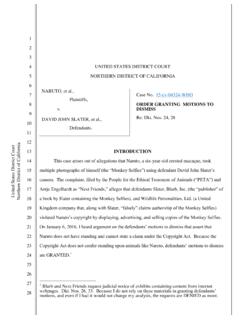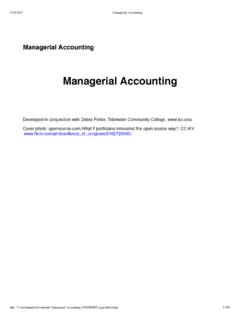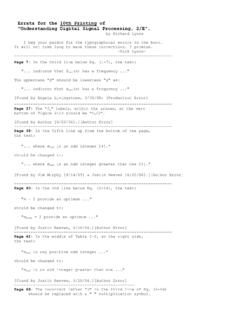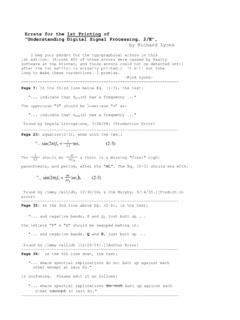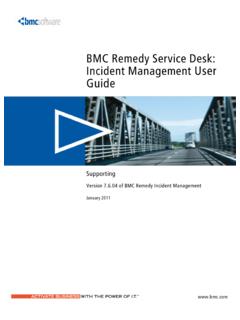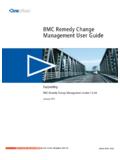Transcription of Guidelines for the Management of Pain in Vulnerable ...
1 Guidelines for the Management of Pain in Vulnerable Populations International Association for the Study of Pain Clinical Guidelines are systematically developed statements that enable clinicians and patients to make the best decisions about their care. Ideally, Guidelines are evidence based, but occasionally but can also be based upon authoritative consensus statements (Livesey & Noon 2007). The Guidelines provided are intended to outline best practices for managing particular problems. Strong evidence helps achieve expert agreements, but even in the face of evidence, it may be difficult to change long-standing beliefs and practices. In terms of Vulnerable populations, there are four main groups emphasized through the Global Year Against Pain: frail older adults, children and infants, people with intellectual disabilities ,and torture survivors.
2 Whilst there may be others, the main focus of this fact sheet is on the aforementioned groups. Given the wide range of pain experiences and individual differences across and within the populations of interest, there may not be a single guideline that would be ideally suited for all. Related to this issue, it is important to note that some Vulnerable persons have limited ability to communicate verbally ( , patients with severe dementia and infants). Given the subjectivity of pain, special guidance is needed for addressing the needs of populations with limited ability to communicate. At least ten Guidelines , for example, focus on older adults and cover issues such as pain assessment and Management , acute and chronic pain, or pain associated with osteoarthritis ( , Herr et al 2011, Schofield et al 2018, Hadjistavropoulos et al 2007, American College of Rheumatology 2012, American Geriatric Society 2015, American Medical Directors Association 2015, Australian & New Zealand College of Anaesthetists 2013, University of Iowa 2015, 2016; a summary of available Guidelines for pain assessment in older adults with dementia can be found in Hadjistavropoulos, 2017).
3 When considering individuals with intellectual disabilities, there appears to be very little in terms of Guidelines within the published literature. Investigators sometimes discuss the use of pain assessment tools that have been developed for children (Doody & Bailey 2017) and the Management regime appears to be tailored according to etiology and patient characteristics and preferences (Doody & Bailey 2017). Nonetheless, there have been efforts to develop assessment tools that are suitable for adults with intellectual disabilities ( , the Chronic Pain Scale for Nonverbal Adults with Intellectual Disabilities [CPS-NAID];. Burkitt et al., 2009). A general approach to the pain assessment of adults with intellectual disabilities has been discussed by Hadjistavropoulos et al.
4 (2011). The pediatric literature is much more comprehensive with several Guidelines available. These Guidelines focus on acute, chronic or cancer pain from specific countries and from the World Health Organization ( , Royal College of Emergency Medicine, 2017, National Institute of Health & Care Excellence 2018, World Health Organization 2012, British Pain Society 2009). A discussion of the assessment on infant _____. Copyright 2019 International Association for the Study of Pain. All rights reserved. IASP brings together scientists, clinicians, health-care providers, and policymakers to stimulate and support the study of pain and translate that knowledge into improved pain relief worldwide. pain can be found in Ruskin et al.
5 , 2011). In terms of torture survivors, there are a few Guidelines but often focus upon the Management of psychological disorders (Amris & Williams 2015) rather than pain. Nevertheless, there have been a number of publications recommendations for managing pain in this population. (Williams & Volkman 2010, Prip & Persson 2012). Implementation of Guidelines and related best practices is often challenging due to organizational and personal barriers ( , resistance to change, insufficient organizational support, resource limitations). (Gagnon et al, 2013). Familiarity and continuing education about the Guidelines may not be enough and would often require policy changes, implementation plans, local clinician champions to oversee implementation, staff and Management engagement and buy in, flexibility in implementation allowing for setting-specific adaptations, as well as tracking implementation success using quality indicators ( , Hadjistavropoulos et al.
6 , 2016). REFERENCES. [1] Amris K1, Williams AC. (2015) Managing chronic pain in survivors of torture. Pain Manag. 2015;5(1):5-12. doi: [2] Burkitt, Breau et al., (2009). Pilot study of the feasibility of the Non Communicating Children's Pain Checklist Revised for pain assessment in adults with intellectual disabilities. Journal of Pain Management , 2(1). [3] Doody O, Bailey ME (2017) Interventions in pain Management for persons with an intellectual disability. Journal of Intellectual Disabilities [4] Gagnon, M. M., Hadjistavropoulos, T., & Williams, J. (2013). Development and mixed methods evaluation of a pain assessment video training program for long-term care staff. Pain Research & Management , 18(6), 307-312.
7 [5] Hadjistavropoulos, T., Breau, L. & Craig, (2011). Pain assessment in adults and children with limited ability to communicate. In Turk & R. Melzack (Eds.) Handbook of pain assessment (3rd Edition) (pp. 260-280). New York: Guilford Press [6] Hadjistavropoulos, T., Williams, J., Kaasalainen, S., Hunter, , Savoie, M. & Wickson-Griffiths, A. (2016). Increasing the frequency and timeliness of pain assessment and Management in long-term care: Knowledge transfer and sustained implementation. Pain Research and Management , vol. 2016, Article ID 6493463, 13 pages. [7] Hadjistavropoulos, T. (2017). Guidelines and practical approaches for the effective pain assessment of the patient with dementia. In S. Gibson and S.
8 Lautenbacher (Editors), Pain in dementia, pp. 177-191. Philadelphia: Wolters Kluwer. [8] Livesey & Noon (2007) Implementing Guidelines : what works. ADC Education & Practice [9] National Institute for Health & Care Excellence. NIce Guidelines pain Management in children with medical illnesses + Guidelines +pain+ [10] Ruskin, D., Amaria, , Warnock, , & McGrath, (2011). Assessment of pain in infants, children and adolescents. In Turk & R. Melzack (Eds.) Handbook of pain assessment (3rd Edition) (pp. 213-241). New York: Guilford Press. [11] The Royal College of Emergency Medicine. Best Practice Guideline. Management Management of pain in children (REV July 2017). 1. Revised. July 2017. [12] Williams A & Volkman (2010) Understanding Pain from torture.
9 Pain Management . 3. 359-366. [13] Prip K, Persson AL, Sjolund BH (2012) Sensory functions in the foot soles in victims of generalised torture, in victims beaten under the feet (falanga) and in healthy controls a blinded study using quantitative sensory testing. BMC Int. Health Hum. Rights. [14] World Health Organisation (2012) Guidelines on the treatment of persistent pain in children with medical illnesses. _____. Copyright 2019 International Association for the Study of Pain. All rights reserved. IASP brings together scientists, clinicians, health-care providers, and policymakers to stimulate and support the study of pain and translate that knowledge into improved pain relief worldwide. AUTHORS.
10 Patricia Schofield, PhD, Co-Chair Global Year Task Force Professor of Pain & Ageing Abertay University Dundee, United Kingdom Thomas Hadjistavropoulos, PhD. Research Chair in Aging and Health Department of Psychology University of Regina Regina, Canada About the International Association for the Study of Pain . IASP is the leading professional forum for science, practice, and education in the field of pain. Membership is open to all professionals involved in research, diagnosis, or treatment of pain. IASP has more than 7,000 members in 133 countries, 90 national chapters, and 20. Special Interest Groups. As part of the Global Year Against Pain in the Most Vulnerable , IASP offers a series of Fact Sheets that cover specific topics related to pain in Vulnerable populations.

